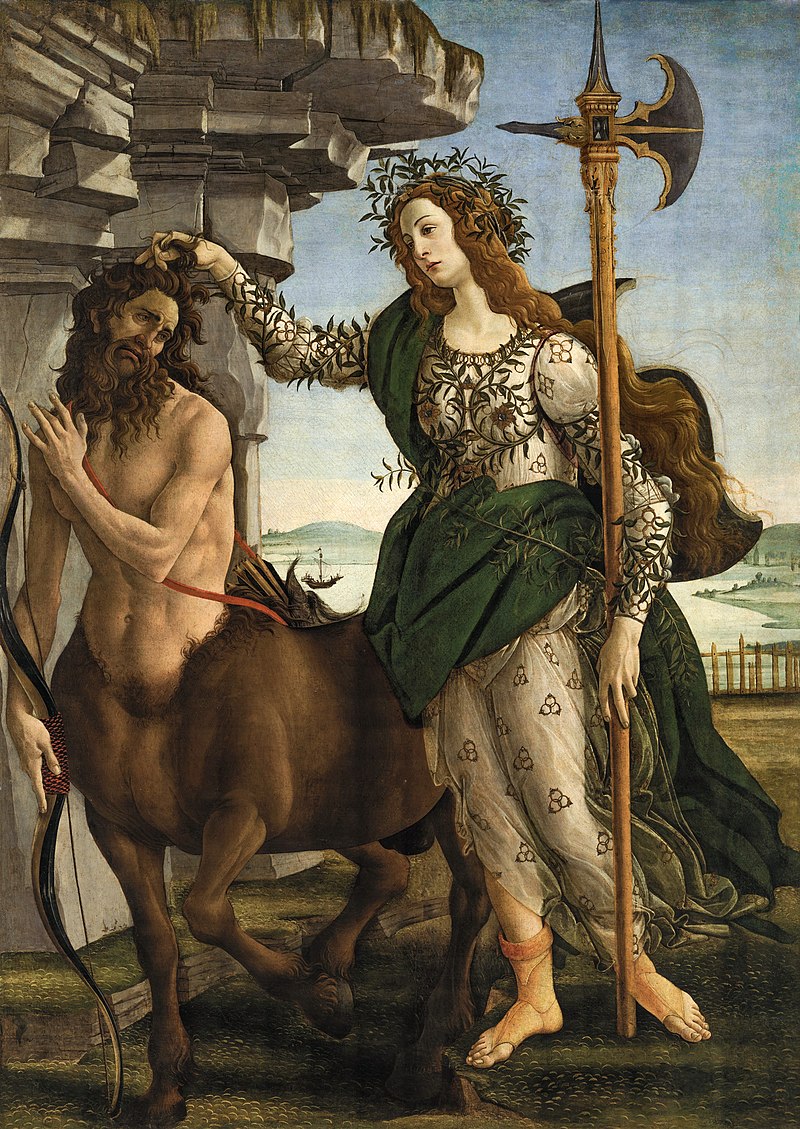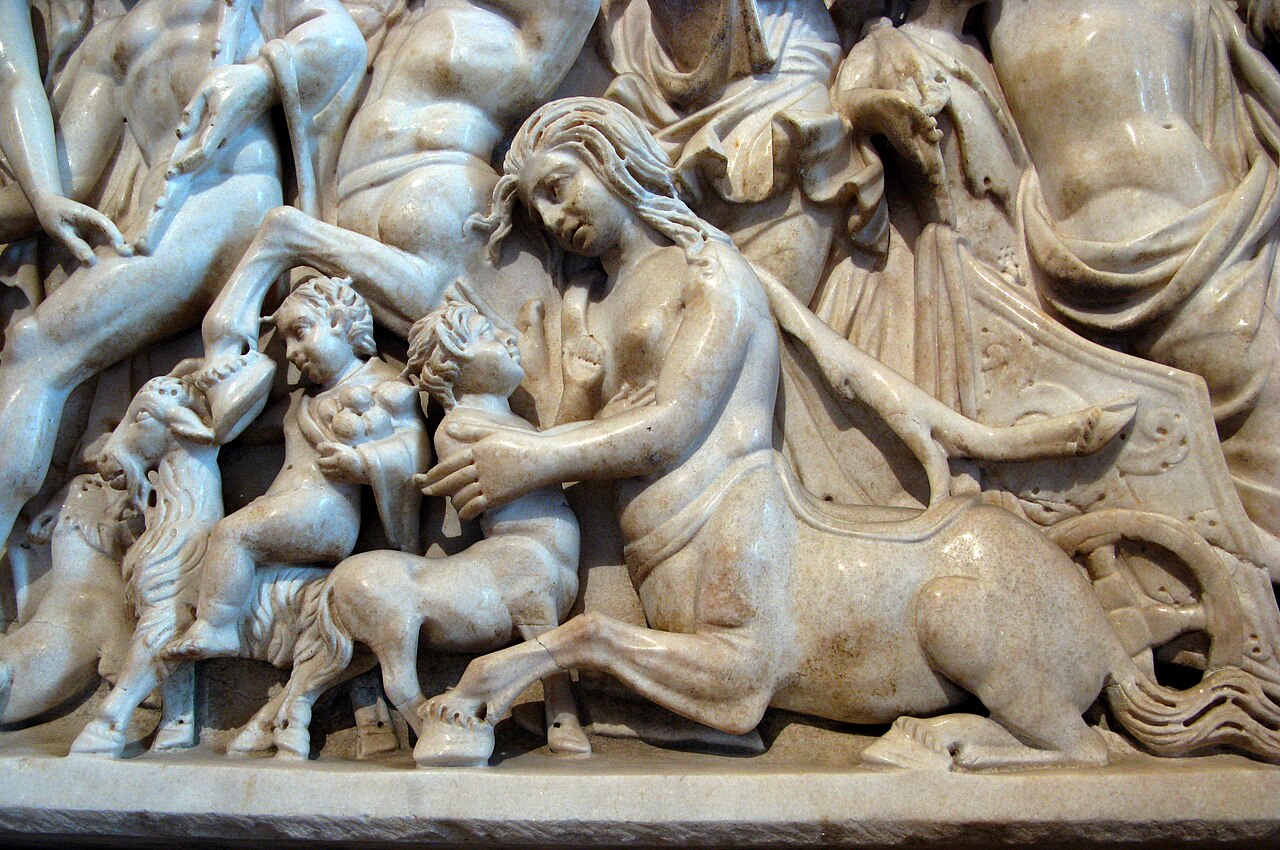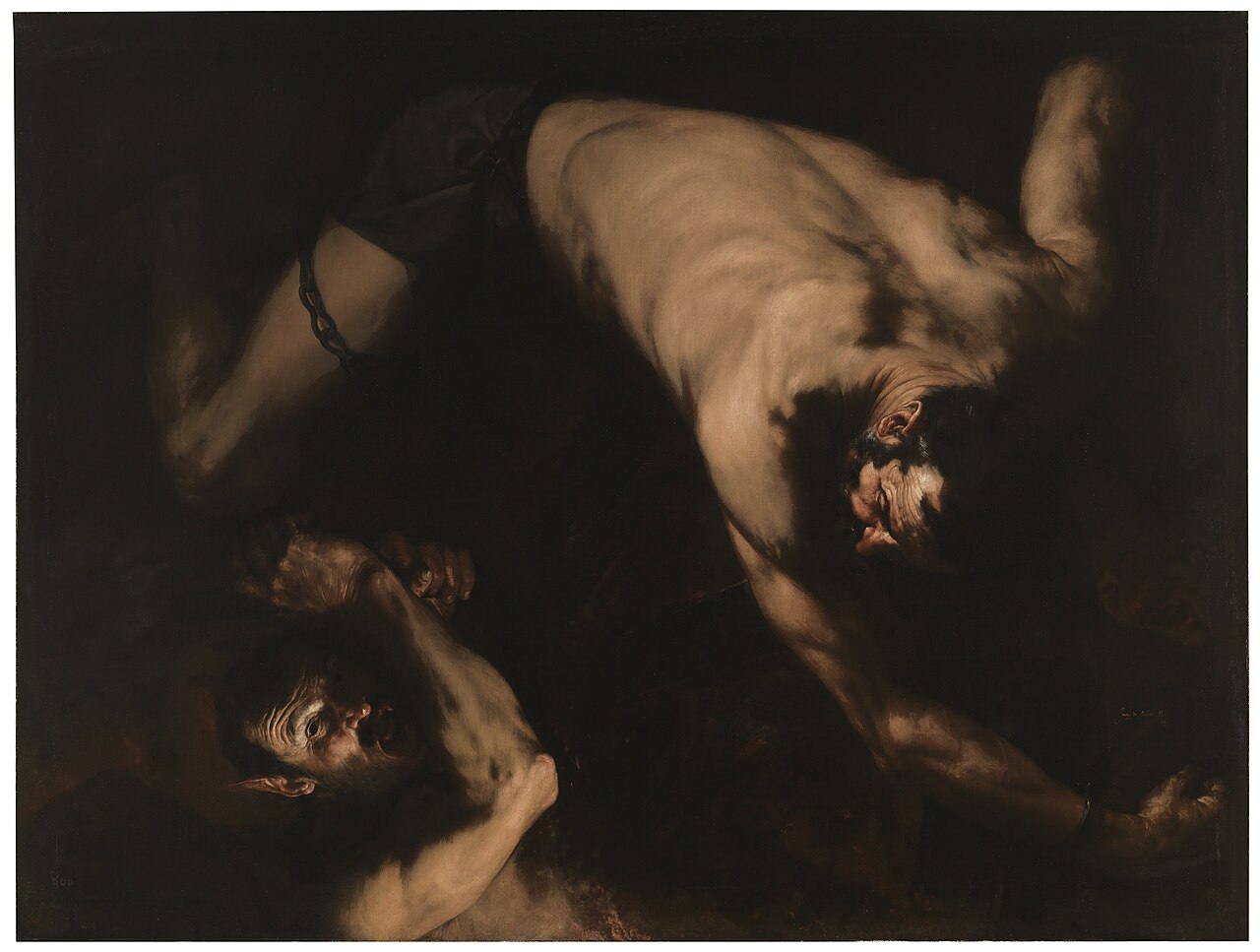Botticelli and the dual nature of the centaur: because in this intersection between good and evil our time is written

Born from an impossible encounter between divine heights and human lowness, the mythological creature reminds us that today it is difficult to distinguish moral cornerstones
A kind, but firm gesture: a graceful woman although in arms grabs a half -man creature for her hair and half animal, which under her touch almost seems to take on a contacted, suffering position. What tells us This work by Sandro Botticelli, kept in the Uffizi Gallery of Florence and known with the title « Pallas and the Centaur »? It is certainly one of the numerous mythological representations that dot the Florentine four hundred (around 1485 is dated) and most likely the woman depicts Minerva, the goddess of reasoning and virtue. The centaur, on the other hand, embodies its opposite, a ferine and monstrous nature. But this painting, perhaps not famous like other works by Botticelli (we think only of spring or Venus), is a small treatise on human nature and it is worth trying to look at it better.
We are in the second half of the fifteenth century. Sandro Botticelli is a famous artist, a kind of « prince » of the Medici court. It is known for its extraordinary ability to instill harmony in the figures, but has an extra gear that the city aristocracy likes very much: identifies the beauty (and not the sacred) as the ultimate goal of a work and this is why its Madonnas, especially those of the first period, emanate a singular gracesuspended between earth and sky, an intersection between mythology and faith. A mastery, this, which was born in the breast of the Medici Florence, where beauty was one of the many pollings of philosophy: neoplatonic circles approached the human and divine figure in the concept of completeness, love was a tool to achieve God and even Eros is covered with a noble meaning.

Marsilio Ficino, in his great humanistic architecture, had found a way to make religion with religion on the rational authority of philosophy. Botticellian painting was the emanation of all this. The myth was the riverbed in which philosophy and faith could meet thanks to the strength of the metaphor. And in this painting, perhaps made for the wedding of Lorenzo di Pierfrancesco, cousin of Lorenzo the Magnificent, there is an entire training novel, enclosed in sinuous and fluid forms. Meanwhile, there is the identity of the woman: most likely it is Pallade Athena, otherwise it could be Camilla, a warrior virgin that fell into battle to defend the homeland. Certainly, the female image embodies virtue, the right way, the one who « brakes », literally, the instincts of the beast. On the other hand we have the most interesting subject, the centaur.

Half man and half animal, this figure has an origin that is told to us by numerous ancient sources, such as Apollodoro and Ovid as a fascinating fairy tale. Once upon a time there was a king, it was called ission and had no particular quality, it was not distinguished by courage or by resourcefulness. He lived in the day. When he decided to take his wife, he chose the daughter of a rich and respectable man, who however never handed over the promised gifts to the stipulation of the marriage contract. Indeed, insulation attracted the father -in -law at home and killed him with a trap. Since then this mediocre man became an marginalized, wandered for a long time in an exile without redemption, until Jupiter himself moved and decided to give him a second possibility.

This is a central node of both history and Botticellian painting: in the neoplatonic doctrine redemption a return to one, that is, to the perfect fullness through a spiritual purification, an ascent that starts from the sensitive world (where the soul is caged in the body) and arrives at the liberation. In short, for insulation this was the great opportunity both to redeem its wrongs, and to get rid of that mediocrity not very suitable for its lineage. Zeus invites him to a banquet, he admits it in the presence of the most « high » creatures, but Isto is unable to get rid of his own mean and cowardly nature: he looks with evident desire was, Zeus’ partner.

To the king of the gods this gaze does not escape and so he decides to test him. He creates an image perfectly resembling Eva, but with the consistency of a cloud, wait for it to calm the night and make them meet. The king without brakes abandons himself to carnal instincts, tries to kiss the cloud and in this way signs his condemnation: he is thrown into the tartar and tied to a wheel, destined to turn forever. But in the meantime Nefele, the simulacrum of Era, waited for a child: From this impossible union, because between two opposing worlds (the divine heights and human lowness) a centaur was born.
Figure that embodies the sublime and the abyss, which oscillates between vice and virtue, extraordinarily modern because – COme has intuited and written Friedrich Nietzsche, in the era that « killed God » and therefore in a time when a precise direction is lacking, distinguishing the two parts is difficult. We are a mixture of good and evil, we sway between two opposite poles and, like the centaurs, we water in the uncertainty between being and the other. In mature Botticelli, the one that senses the ailments of the Florentine society (prelude to the expulsion of doctors and to the great disillusionment) this figure becomes even more intense, because we do not read ferocity, but a kind of contrite melancholy, almost the awareness of a fate inclemely. And the light but decisive gesture of the Minerva who holds him for the hair is the seal of a very thin message: the virtue is not entirely separated from the vice, but in the latter there is a moral seed that over time can grow.

Just as, a few years later, Botticelli himself will mature a seed of restlessness and dismay, due not only to the fall of his protectors, the doctors, but also to an inner change of course. The light melancholy that faded into the harmonious grace of the first works will become more defined, almost clear in the expressionist contours. And so, in the later works such as the allegory of slander, completed in 1895, five years before death, Botticelli allows himself to combine the vestiges of the ancient idea of beauty to the depravation of the wrongdoing soul. Finally free to demonstrate a dense skepticism that had concealed with irony and impassive faces from the beginning.






